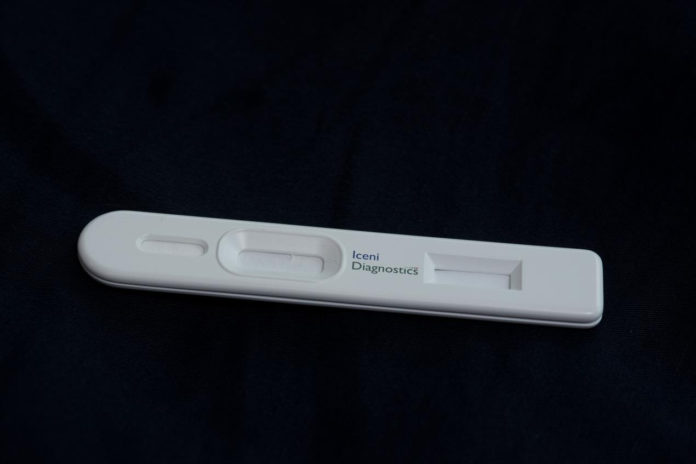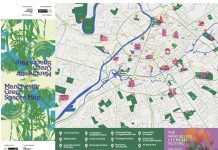World-leading Manchester biotech researchers are working towards developing a test for COVID-19 that could be used at home like a domestic pregnancy test.
This prototype test is based on the fact sugars coat all human cells and could be used in the fight to detect infectious agents like coronavirus.
This new screening new approach can help identify the COVID-19 virus – not by its genetic code, which can mutate, but by using its reliance on chains of sugars on human cells, which are constant.
Sugars coat all cells in the human body and they are the first layer a bacteria or virus encounters. Professor Field and his team are interested in how to use the sugars to identify and even block a virus from penetrating the cell – and so preventing further infection.
The simple-to-use testing device has the potential to be used in ‘hotspot’ communities like frontline NHS staff allowing doctors and nurses to easily test at home to see if they have COVID-19 symptoms or not before going to work.
Communities associated with a building or geographical location which require increased safeguarding such as, hospitals, care homes or workplaces, can quickly test visitors.
Professor Rob Field and his team at The University of Manchester are now working at pace with spin-out company Iceni Diagnostics to get their new test ready and officially validated ready for the autumn. An autumn launch this year is key, as the application of this screening kit can support diagnoses of ‘flu vs coronavirus’, given the typical trend of flu season which can initially present similar symptoms.
The tester would be very useful to ensure people with seasonal flu aren’t confused with people having suspected COVID-19 and the consequences of having to self-isolate and create a new round of disruption to society and the economy.
Prof Field said: “Our existing prototype product for influenza can detect the virus in less than 20 minutes and could be adapted to identify other pathogens such as coronavirus.
“Respiratory viruses invade the body through cells in the airways and lungs. These cells are covered in a coat of sugar chains, known as glycans, which are used for normal function of human tissues. Viruses can utilise these glycans as part of the infection process.”
This process can also be used in reverse to identify the virus in saliva or nasal fluids, said Professor Field, a world expert in glycoscience at the Manchester Institute of Biotechnology (MIB) – and his specialist company has developed this diagnostic technique that uses an artificial glycan receptor to capture a virus.
Professor Field added: “Right now, everybody is talking about a vaccine for coronavirus but vaccine development, validation, safety-testing, manufacture, regulatory approval and deployment is a time-consuming process.
“A low-cost, easy to use screening test that can be performed at the point of care would be an ideal way to limit initial disease transmission in the community and at points of entry to hospitals, or at national borders, for instance.
“Current COVID-19 tests are largely based on PCR (polymerase chain reaction) that requires a laboratory setting for analysis and relies on prior knowledge of the viral genetic code. This code can change as the virus evolves, potentially limiting the effectiveness of the test.
“The Iceni Diagnostics approach uses glycan recognition, which is unaffected by seasonal variation in the genetic code, and can be offered as a handheld home or field-based test.”
Professor Field and his dedicated team have already developed a series of prototype products that can specifically detect pathogens such as Norovirus and different strains of influenza in less than 20 minutes. The team based at MIB will be working with Iceni Diagnostics to further develop these tests in the coming months.
The hand-held device currently under development uses lateral flow – like a home pregnancy test – to give a simple yes/no answer. It requires no refrigeration and no training, meaning the test is usable in any location, by any person, in order to detect flu or other pathogens.
“The current Iceni Diagnostics products detect a single virus. However, the next generation of diagnostics will enable the detection and discrimination of a series of pathogens that give rise to similar symptoms.
“This would enable, for example, a distinction between flu and COVID-19 in a single sample which increases the versatility and robustness of the diagnosis. Additionally, the way the virus interacts with its glycan receptor makes it seasonally consistent, so, even if the virus genetic code mutates, it will still be detected – meaning the Iceni Diagnostics’ test should remain effective in the longer term.”
Professor Field says that the device under development holds huge promise for changing the way we manage global disease: “This new approach, which is based on host-pathogen glycan recognition could potentially result in a more universal detection technique, crucial in early diagnostics of outbreaks.”







